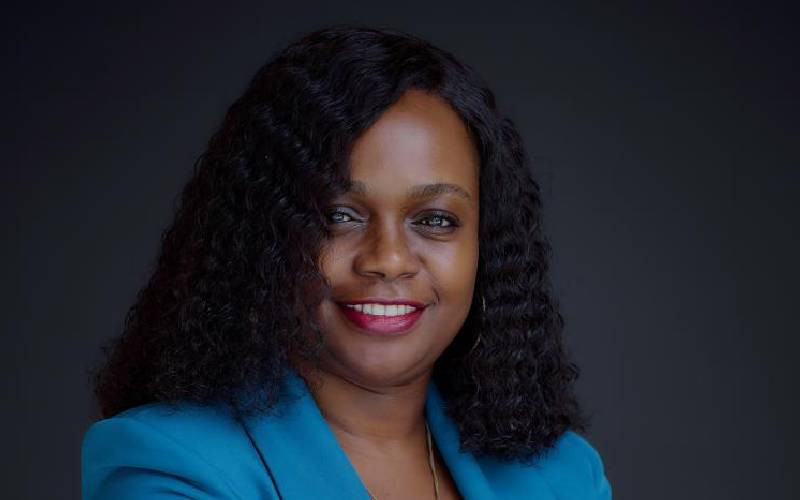
By Nicholas Waitathu
Kenya: Low-income earners have traditionally been underserved when it comes to being provided with avenues to manage the risks they face every day.
This group, into which one in two Kenyans falls, tends to be vulnerable and hold few assets, which means the slightest risk could wipe out a family’s life savings. A fire, hospital bill or even a court fine could sink a household into a destructive cycle of debt.
In insurance practice, there are generally two justifications given for microinsurance. One is the desire to continue building a market for insurance products. And the other is rather humanitarian — to help people, particularly low-income earners, avoid the debt traps caused by borrowing cash at extortionate interest rates.
Few options
This latter reason has been touted as especially useful for those living in informal settlements or who run businesses in open-air markets.
According to the Insurance Regulatory Authority (IRA), the microinsurance sector is expected to help insurers grow their revenue.
Already, several insurance firms, banks and State agencies have dipped into the sector, with microinsurance premiums starting in the low thousands.
Insurance penetration in Kenya stands at 3.2 per cent of the country’s Gross Domestic Product, which IRA CEO Sammy Makove attributes to the service being associated with the middle and upper classes.
“Compared to some other regions in Africa, the microinsurance market in Kenya is not well developed, although commercial insurers are becoming active, and informal ‘insurers’ are expanding with some seeking integration into the formal insurance system,” he said.
The challenge with microinsurance is in reaching those in the low-income segment of the market.
Commercial firms have to navigate the irregular incomes, low profit margins and a lack of formal structures to reach out to potential policyholders.
Mr Nelson Kuria, the CEO of CIC Insurance, which has a variety of microinsurance products, said the low-income market has the potential to grow but remains largely untapped.
Saturated
Stay informed. Subscribe to our newsletter
“The upper market and middle class are almost saturated and are no longer generating more opportunities. This leaves us with no option other than to extend our market operations to the end of the pyramid,” he said.
Mr Kuria said their 2001 foray into microinsurance has since brought in more than Sh600 million in revenue.
“It takes more than eight years to break even in this segment. This is because the level of understanding is low and there are no proper governance structures that can help in remission of premiums.”
But on the upside, he said, this segment is that it is rarely targeted by fraudsters.
“The customers also do not overuse their covers.”
Kuria added that new dynamics such as the growing popularity of chamas and various other groups is making it easier for companies to introduce the microinsurance concept and enhance awareness.
Mr George Mbira, the general manager of Rafiki Microfinance Bank, which has a Sh12,000-a-year medical and funeral cover, said though the low-income market is highly risky, it has massive potential.
“People in the low-income segment have unpredictable revenue, thus making the sector less safe. However, there are huge opportunities that if well utilised can generate more income and provide greater benefits for policyholders.”
Positive progress
Insurance firm Britam early this month confirmed at an investor briefing that it is registering positive progress in microinsurance.
“The microinsurance segment grew to Sh187 million up from Sh132 million the previous year. We are intending to grow it further in the coming years and fully exploit the endowed potential,” said Group Managing Director Benson Wairegi.
Britam last year partnered with mobile service provider Safaricom, mobile health financing technology provider Changamka, and global health organisation PSI to launch Linda Jamii.
Targeted at more than 35 million uninsured Kenyans, the cover is aimed at providing individuals and families with access to in and out-patient cover at a premium of Sh12,000.
Other benefits include maternity cover and a hospitalisation income replacement benefit of Sh500 per day to take care of lost income while in hospital.
The premiums are payable in instalments via mobile money platform M-Pesa.
“We are receiving between 2,000 and 5,000 enquiries every week from across the country. The uptake of the product is high in the major urban centres of Nairobi, Mombasa and Kisumu,” said Britam’s marketing and corporate affairs director, Mr Muthoga Ngera.
Makove added that donor involvement over the years has enhanced the growth of microinsurance, a trend expected to continue.
He said Kenya is ranked third in East Africa as regards microinsurance uptake at 3.2 per cent of the population. Tanzania is first at 7.2 per cent, followed by Uganda at 4.6 per cent. Burundi is at 1.1 per cent and Rwanda at 0.12 per cent.
bizbeat@standardmedia.co.ke
 The Standard Group Plc is a
multi-media organization with investments in media platforms spanning newspaper
print operations, television, radio broadcasting, digital and online services. The
Standard Group is recognized as a leading multi-media house in Kenya with a key
influence in matters of national and international interest.
The Standard Group Plc is a
multi-media organization with investments in media platforms spanning newspaper
print operations, television, radio broadcasting, digital and online services. The
Standard Group is recognized as a leading multi-media house in Kenya with a key
influence in matters of national and international interest.
 The Standard Group Plc is a
multi-media organization with investments in media platforms spanning newspaper
print operations, television, radio broadcasting, digital and online services. The
Standard Group is recognized as a leading multi-media house in Kenya with a key
influence in matters of national and international interest.
The Standard Group Plc is a
multi-media organization with investments in media platforms spanning newspaper
print operations, television, radio broadcasting, digital and online services. The
Standard Group is recognized as a leading multi-media house in Kenya with a key
influence in matters of national and international interest.






